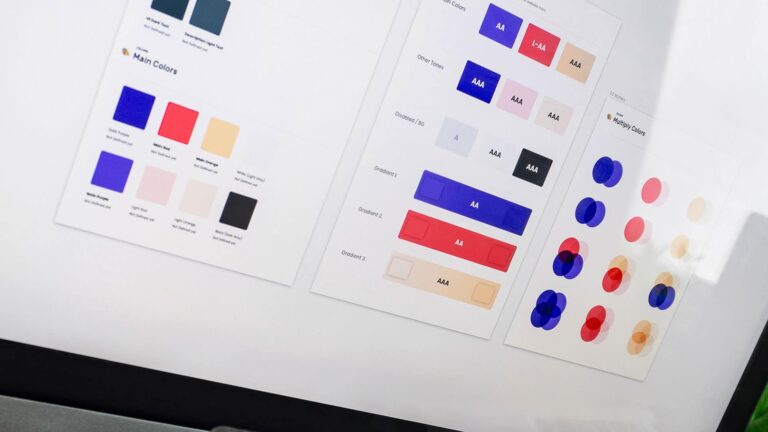
A crucial point that companies need to understand is that video production doesn’t have to be so tricky and complicated. They can be prepared in a very short while. One doesn’t even need a degree in video production and editing to produce captivating and eye-catching videos. Let’s have a closer look at the best tips for video production for social media.
1. Come up with a list of ideas
Contents
Coming up with an emotive plotline for your videos can be time-consuming and overwhelming. It helps if you have an inspiration for ideas to use as a foundation upon which you can then prepare a plotline. First, look at your top-performing blog posts. Your Google Analytics account will help you in identifying which blog post had maximum engagement from viewers. Use this to create a video.
E.g. If you are a coffee beans roasting company and your top-performing blog post is on “Brewing a delicious cup of French Press coffee”, prepare a video that shows your customers how they can do so at home or in under 10 minutes.
Alternatively, you can also look at your top-performing social media posts. [Pro tip: Have a look at good videos posted by your competitors. Take inspiration from these videos and adapt them to your brand message or product line.]
2. Capture attention early
If your video isn’t engaging, the viewer will ditch it in the very first 30 seconds. You need to make sure that you add an engaging hook in the beginning to hold the viewer’s attention. Plus, most of these videos auto-play on social media platforms, and you must put something right in the beginning for viewers to tap on the video and watch ahead. Incorporate your brand message directly in the beginning or use a post copy that seems intriguing or eye-catching.
That being said, do not stretch the video too much. You wouldn’t want them to ditch it mid-way. The appropriate maximum video lengths for multiple social media platforms are:
● Snapchat – 10 seconds
● Facebook – 10 minutes
● LinkedIn – 10 minutes
● Instagram – 60 seconds (story), 8-10 minutes (IGTV)
● Twitter – 2 minutes
3. Design your videos for sound-off view
Not everyone likes to watch videos with sound on. Plus, doing so in the office or while commuting can be tough as well. It’s a wise idea to design videos so that the viewer can understand everything, even with sound-off. An excellent way to take care of this is by adding subtitles to your videos. Use easy-to-read fonts and colors for this. Alternatively, consider preparing animated or illustrative videos that are self-explanatory and do not require dialogues in the first place.
4. Take special care of audio quality
This is especially important in videos that require dialogues. You could come up with the best script and use great visuals in your video. However, if your audio is not clear, your viewer will not engage well. Use an external mic to record all such dialogues. They are inexpensive and offer superior-quality audio compared to the audio quality of built-in microphones in smartphones or laptops. These external mics ensure no unwanted noise or ambient sounds in the background and that the recorded dialogues are crisp and clear.
5. Assess your target audience carefully
Videos do not come with a one-size-fits-all guarantee. Depending on your target audience and their behaviors, you must tweak your videos to ensure that they create excellent engagement. For e.g. if your target audience engages with your brand more on Instagram than they do on Facebook, prepare videos that suit the Instagram algorithm. Consider preparing long-form video as IGTV and quick explainer videos as a story. You can even create a highlight and add these stories there for future reference.
Plus, also consider the style and tone of your videos. If your target audience is teenagers, consider using a casual and friendly tone when preparing the script of the video. If your target audience is business professionals, use a semi-casual style without being too dry or impersonal. Remember, you cannot use the same video for multiple social media platforms without adapting them to suit the environment. Users on Instagram do not want to look at lengthy stories while users on Facebook like engaging with descriptive videos. Adapt your videos smartly and cater to the target audience accordingly.
6. Do not skip editing
Your recorded video needs a little refining before it is ready to be put on social media platforms. It should be professional and high-quality for viewers to view you as a serious and passionate brand. Sharing unedited videos speaks very poorly about your brand’s commitment. Thus, do not skip editing your videos no matter what. There are a few things you need to take care of without fail.
First, edit your video for any background noise, ambient sounds, awkward pauses, or sections that do not offer any value. The editing section also adds subtitles, on-screen text, and other effects in your video. Also, ensure that the dialogues are in sync with the video. Edit for texture, lighting, and other such parameters to ensure that the video offers high-quality consistency throughout its length. At last, combine all individual clips and your video is ready to be shared!






